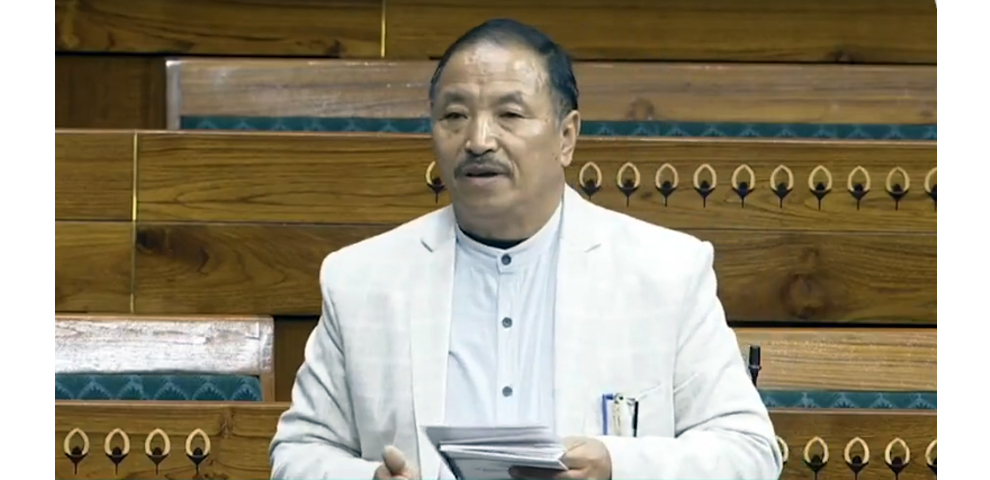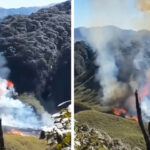In light of concerns raised by local villagers regarding the proposed 186 MW Dikhu Hydroelectric Project, Former Engineer-in-Chief of the State Department of Power, Er Moa Aier has shared his perspective on the project’s potential benefits and safeguards. Notably, two villages in Longleng district—Kangching and Nian—have openly opposed the development of the Dikhu Hydro Electric Project (HEP).
A villager told MT, “Our village area is very small. If the hydro project passes through our village, about 50% of our village area will be submerged under water” (published on July 25, 2024).
Er Moa Aier, refuted claims that the project would submerge more than 50% of village land as “false.” He explained, “Some paddy fields are split into small patches, maybe about 20-25 plots. The crop is hardly sufficient for the year. Their total submergence will be less than 5% of their total village land.”
RELATED NEWS: Why villages are against the 186 MW Dikhu Hydroelectric Project
Addressing these concerns, Er Aier informed that the submergence area will impact villages in three districts: Longleng, Mon, and Mokokchung. “Most of the lands are stiff mountainsides unsuitable for any farming or otherwise. In some areas, there are recent plantations like betel nuts. But the economic output from these will be much less than what they can achieve with the development of the hydro project. For instance, now more than 200 families depend on fisheries from Doyang Dam. This number will keep increasing with the introduction of cold storage and commercial marketing.”
Er Aier also cleared doubt of any misunderstanding between the villages and the department stating, “This is not a misunderstanding with the Department. They actually know everything very well. Joint site visits, submergence area confirmation, etc., were all done. It is an internal issue among themselves.”
Regarding the involvement of civil society, Er Aier affirmed that there had been sufficient engagement with all the civil societies. “All three tribal apex bodies are also fully in the loop,” he said, adding that the upcoming meeting with youth and entrepreneurs scheduled on July 29 is the last group to be addressed.
He further added, “As recently as last May 2024, the Department had toured the area and had meetings with all the project area village councils. Most have understood and are very supportive.” It maybe mentioned that the department bid farewell to Er Aier on 31 May, 2024.
On the question of Environmental Impact Assessment (EIA) report regarding this project, Er Aier confirmed, “The EIA report is under preparation. It will be presented with other details for discussion and feedback during the Public Hearing. This will be made publicly available.”
The EIA, ideally, should be widely available before the Public Hearing so that people can come prepared. To this, Er Aier said, “It will be made available in advance while notifying the date, so that people can come prepared.”
“Environmental care and protection are of great importance. The Ministry of Environment, Forest and Climate Change (MoEF) will also not give clearance without adequately addressing this issue. Only after the final EIA report and Public Hearings will the submission be made to MoEF,” he added.
Why hydropower?
Er Aier emphasized the significance of hydropower in response to ongoing concerns about the 186 MW Dikhu Hydroelectric Project. He pointed out that hydropower is one of the most reliable and cleanest sources of energy.
“The world, having once condemned hydro, is now switching back. In South India, all hydropower potential is now tapped, and they are looking for other alternatives. The same is happening in Europe, where nuclear power may make a comeback. Japan relies heavily on nuclear power due to limited hydro resources and practically no coal. Seventy percent of Nagaland’s current power supply comes from hydro sourced from other states using someone else’s land,” he said.
Er Aier further noted that the state’s peak power demand has significantly increased. “Until just a few years ago, the state’s peak power demand was about 100 MW. This month, it crossed 190 MW. From where is this power coming? Other states, other people’s projects. It is an embarrassment for the Nagas.”
Status of power supply in Nagaland
Er Aier further provided the power supply status update for July 24, 2024, at 6PM which revealed that Nagaland is currently experiencing a shortfall in electricity supply. The total electricity demand at that hour was 188.4 MW, but only 157.2 MW was available. This electricity comes from two sources: 135.2 MW from the central grid and 22.0 MW from local generation at the Likimro Hydro Electric Project (LHEP).
Due to this shortfall, the Department of Power has implemented load shedding, which means planned power cuts, to balance the limited supply with the demand. The actual power usage in different areas is as follows: Dimapur division uses 94.1 MW, Kohima division uses 27.5 MW, and Mokokchung division uses 35.3 MW.
To manage the shortfall, specific feeders and substations are undergoing load shedding. In Dimapur, the 33kV Metha and 33kV Forest feeders are affected. In Kohima, the 11kV Minister Hill, 11kV Jakhama, and 11kV BSF feeders are affected. In Mokokchung, the 66kV Mon Town feeder is affected.



